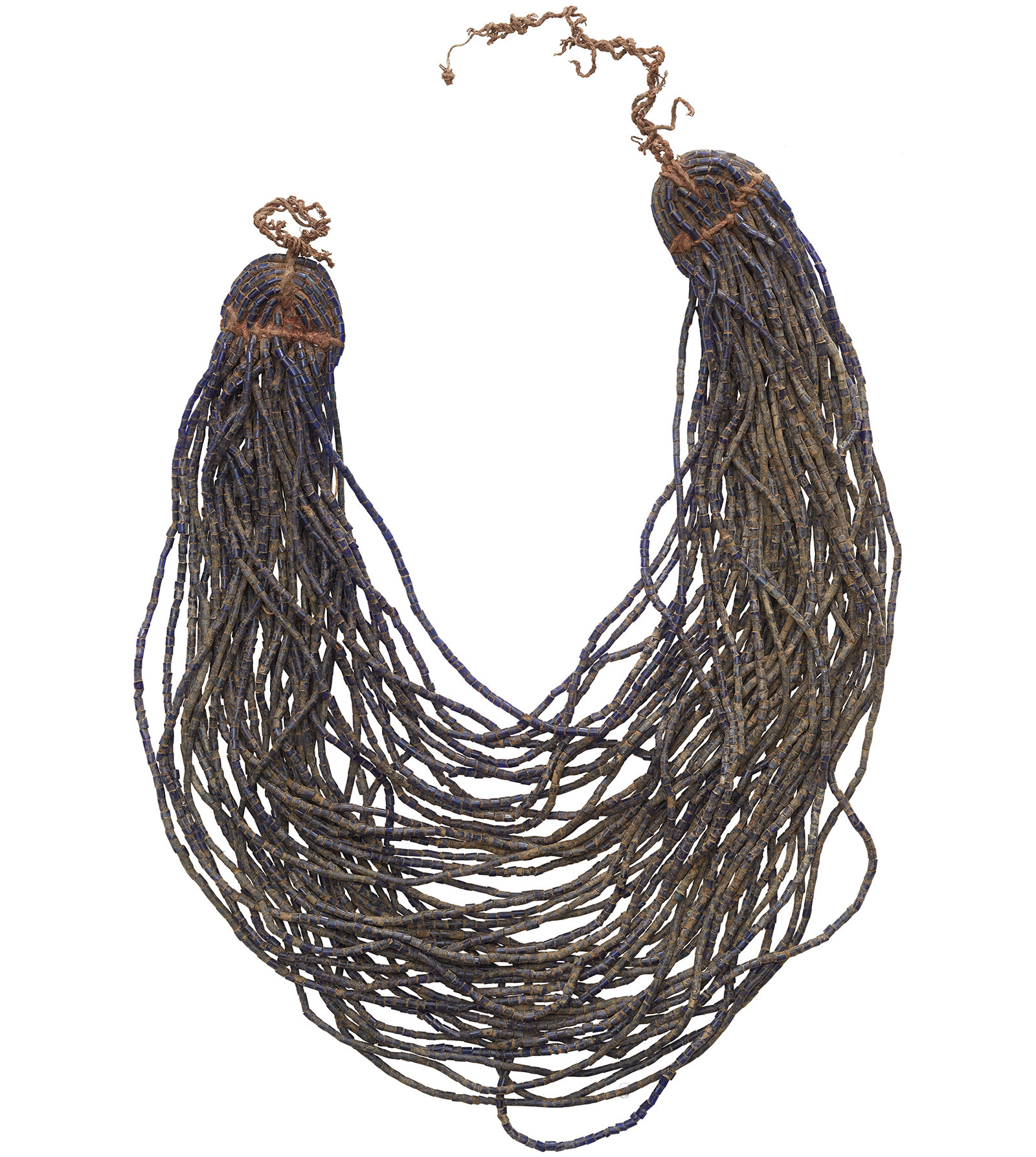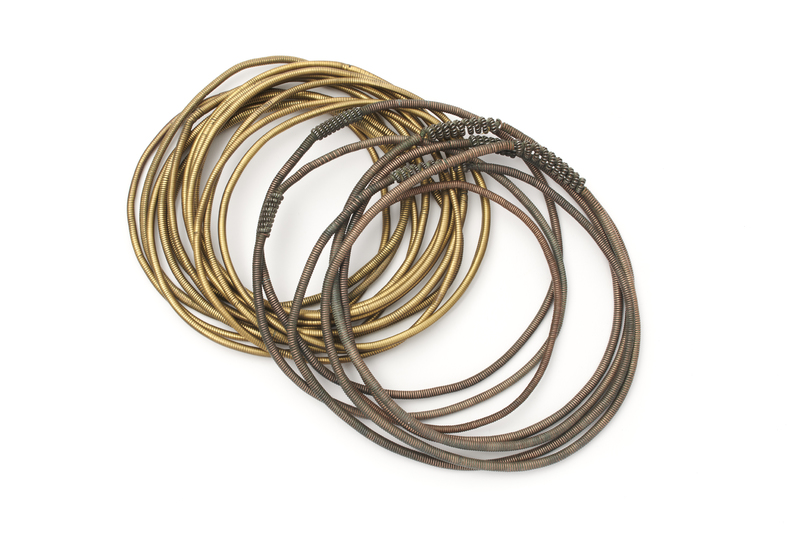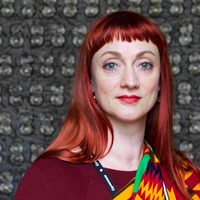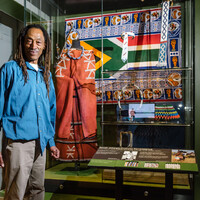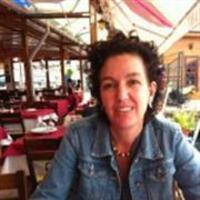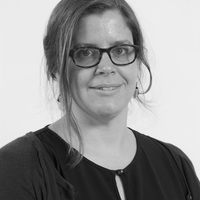Leg ornament; Dikgare
Item
Title
Leg ornament; Dikgare
Creator
Unrecorded
Description
Physical Description: Twenty twisted wire leg ornaments, in a simple circular bangle form, worn by women just below the knee. 13 brass, 7 copper or copper and iron.
Contextual Description: 01:23:05[Discussion in Tswana, TN mimes wearing them and the noise of walking] SL: They are called Maseka which I think is a common term
TS: in the South
SL: He says what he knows of is making something similar to this but out of papyrus reed, which you would get from the edge of a pool
RHH: a vegetable fibre
SL: That’s what they would use to make the rings that they wear below their knees, the whole aim being to try and help your calves to grow. Transcription by KL of MAC_BB_20190817_RPM3 SL Interview with Tshupo Ntono, Village Elder, Language: Setswana with English translations by SL, 2019
TS: in the South
SL: He says what he knows of is making something similar to this but out of papyrus reed, which you would get from the edge of a pool
RHH: a vegetable fibre
SL: That’s what they would use to make the rings that they wear below their knees, the whole aim being to try and help your calves to grow. Transcription by KL of MAC_BB_20190817_RPM3 SL Interview with Tshupo Ntono, Village Elder, Language: Setswana with English translations by SL, 2019
Contextual Description: SL 7:53
And ...what's his name Greek... What was his last name? [Greek] Khaladi and Nick Walker...
SL 8:01
carried out an excavation and there was a burial spot. Somebody who had these kind of [copper bracelets] you know, it's an old old tradition.
The above notes are from a transcription by Kathleen Lawther of a discussion between Gase Kediseng, JoAnn McGregor, Nicola Stylianou, Scobie Lekhuthile and Winani Thebele which took place at the Khama III Memorial Museum on the 5th of August 2019. To listen to the full recording please follow the link below.
And ...what's his name Greek... What was his last name? [Greek] Khaladi and Nick Walker...
SL 8:01
carried out an excavation and there was a burial spot. Somebody who had these kind of [copper bracelets] you know, it's an old old tradition.
The above notes are from a transcription by Kathleen Lawther of a discussion between Gase Kediseng, JoAnn McGregor, Nicola Stylianou, Scobie Lekhuthile and Winani Thebele which took place at the Khama III Memorial Museum on the 5th of August 2019. To listen to the full recording please follow the link below.
Publisher
Making African Connections
Date
Pre 1899
Type
PhysicalObject
Format
Whole: 130 mm x 130 mm x 6 mm
Identifier
R4007/30
Source
Collected by Reverend William Charles Willoughby, a Christian missionary, in what was then the Bechuanaland Protectorate (1885-1966). It is now the Republic of Botswana, having gained independence from Britain in 1966.
From 1889-92 Willoughby was pastor at Union Street Church, Brighton (now The Font pub). From 1893 to 1898 he worked for the London Missionary Society in Bechuanaland. He assembled this collection of objects during this period. This was a period of social and technological changes and these objects represent traditional lifestyles and skills, rather than the contemporary lives of the people Willoughby met.
Willoughby's collection was loaned to Brighton Museum in 1899 when he returned to the UK. The loan was converted into a donation in 1936, and accessioned as acquisition R4007.
Some objects were re-numbered with the WA (World Art) numbering system in the 2000s. These numbers have been reverted to the original R4007/... numbers where possible for consistency in 2019.
From 1889-92 Willoughby was pastor at Union Street Church, Brighton (now The Font pub). From 1893 to 1898 he worked for the London Missionary Society in Bechuanaland. He assembled this collection of objects during this period. This was a period of social and technological changes and these objects represent traditional lifestyles and skills, rather than the contemporary lives of the people Willoughby met.
Willoughby's collection was loaned to Brighton Museum in 1899 when he returned to the UK. The loan was converted into a donation in 1936, and accessioned as acquisition R4007.
Some objects were re-numbered with the WA (World Art) numbering system in the 2000s. These numbers have been reverted to the original R4007/... numbers where possible for consistency in 2019.
William Charles Willoughby
Botswana, Southern Africa, Africa
1893-1898
Space/Place
Botswana, Southern Africa, Africa
Cultural Group: Tswana
Rights
Creative Commons Attribution-ShareAlike 4.0 International

